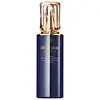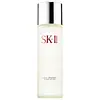What's inside
What's inside
 Key Ingredients
Key Ingredients

 Benefits
Benefits

 Concerns
Concerns

 Ingredients Side-by-side
Ingredients Side-by-side

Water
Skin ConditioningAlcohol Denat.
AntimicrobialGlycerin
HumectantDipropylene Glycol
HumectantHydrogenated Polydecene
EmollientDimethicone
EmollientCetyl Ethylhexanoate
EmollientPEG/PPG-14/7 Dimethyl Ether
Skin ConditioningPEG-60 Glyceryl Isostearate
Tricaprylin
MaskingTrehalose
HumectantPotassium Methoxysalicylate
BleachingPEG-5 Glyceryl Stearate
EmulsifyingPhenoxyethanol
PreservativePetrolatum
EmollientStearic Acid
CleansingBehenyl Alcohol
EmollientIsostearic Acid
CleansingBehenic Acid
CleansingCarbomer
Emulsion StabilisingPotassium Hydroxide
BufferingButylene Glycol
HumectantTheanine
EmollientBatyl Alcohol
EmollientPEG/PPG-17/4 Dimethyl Ether
Skin ConditioningTocopheryl Acetate
AntioxidantXanthan Gum
EmulsifyingPhytosteryl Macadamiate
Skin ConditioningPolyquaternium-51
Skin ConditioningParfum
MaskingAlcohol
AntimicrobialSodium Metaphosphate
BufferingDisodium EDTA
Dipotassium Glycyrrhizate
HumectantSodium Acetylated Hyaluronate
HumectantSodium Metabisulfite
AntioxidantAlpha-Isomethyl Ionone
PerfumingCitronellol
PerfumingLinalool
PerfumingOlea Europaea Leaf Extract
PerfumingGeraniol
PerfumingPaeonia Albiflora Root Extract
Skin ConditioningBenzyl Benzoate
AntimicrobialHydrolyzed Silk
HumectantSerine
MaskingRubus Suavissimus Leaf Extract
Skin ConditioningCI 77491
Cosmetic ColorantCI 77492
Cosmetic ColorantCinnamomum Cassia Bark Extract
MaskingLavandula Angustifolia Oil
MaskingTocopherol
AntioxidantBupleurum Falcatum Root Extract
Skin ConditioningBenzoic Acid
MaskingUncaria Gambir Extract
AstringentAngelica Acutiloba Root Extract
Skin ConditioningRosa Roxburghii Fruit Extract
TonicHydrolyzed Conchiolin Protein
Skin ConditioningHouttuynia Cordata Extract
Skin ConditioningWater, Alcohol Denat., Glycerin, Dipropylene Glycol, Hydrogenated Polydecene, Dimethicone, Cetyl Ethylhexanoate, PEG/PPG-14/7 Dimethyl Ether, PEG-60 Glyceryl Isostearate, Tricaprylin, Trehalose, Potassium Methoxysalicylate, PEG-5 Glyceryl Stearate, Phenoxyethanol, Petrolatum, Stearic Acid, Behenyl Alcohol, Isostearic Acid, Behenic Acid, Carbomer, Potassium Hydroxide, Butylene Glycol, Theanine, Batyl Alcohol, PEG/PPG-17/4 Dimethyl Ether, Tocopheryl Acetate, Xanthan Gum, Phytosteryl Macadamiate, Polyquaternium-51, Parfum, Alcohol, Sodium Metaphosphate, Disodium EDTA, Dipotassium Glycyrrhizate, Sodium Acetylated Hyaluronate, Sodium Metabisulfite, Alpha-Isomethyl Ionone, Citronellol, Linalool, Olea Europaea Leaf Extract, Geraniol, Paeonia Albiflora Root Extract, Benzyl Benzoate, Hydrolyzed Silk, Serine, Rubus Suavissimus Leaf Extract, CI 77491, CI 77492, Cinnamomum Cassia Bark Extract, Lavandula Angustifolia Oil, Tocopherol, Bupleurum Falcatum Root Extract, Benzoic Acid, Uncaria Gambir Extract, Angelica Acutiloba Root Extract, Rosa Roxburghii Fruit Extract, Hydrolyzed Conchiolin Protein, Houttuynia Cordata Extract
 Reviews
Reviews

Ingredients Explained
These ingredients are found in both products.
Ingredients higher up in an ingredient list are typically present in a larger amount.
Butylene Glycol (or BG) is used within cosmetic products for a few different reasons:
Overall, Butylene Glycol is a safe and well-rounded ingredient that works well with other ingredients.
Though this ingredient works well with most skin types, some people with sensitive skin may experience a reaction such as allergic rashes, closed comedones, or itchiness.
Learn more about Butylene GlycolDisodium EDTA plays a role in making products more stable by aiding other preservatives.
It is a chelating agent, meaning it neutralizes metal ions that may be found in a product.
Disodium EDTA is a salt of edetic acid and is found to be safe in cosmetic ingredients.
Learn more about Disodium EDTAGlycerin is already naturally found in your skin. It helps moisturize and protect your skin.
A study from 2016 found glycerin to be more effective as a humectant than AHAs and hyaluronic acid.
As a humectant, it helps the skin stay hydrated by pulling moisture to your skin. The low molecular weight of glycerin allows it to pull moisture into the deeper layers of your skin.
Hydrated skin improves your skin barrier; Your skin barrier helps protect against irritants and bacteria.
Glycerin has also been found to have antimicrobial and antiviral properties. Due to these properties, glycerin is often used in wound and burn treatments.
In cosmetics, glycerin is usually derived from plants such as soybean or palm. However, it can also be sourced from animals, such as tallow or animal fat.
This ingredient is organic, colorless, odorless, and non-toxic.
Glycerin is the name for this ingredient in American English. British English uses Glycerol/Glycerine.
Learn more about GlycerinWater. It's the most common cosmetic ingredient of all. You'll usually see it at the top of ingredient lists, meaning that it makes up the largest part of the product.
So why is it so popular? Water most often acts as a solvent - this means that it helps dissolve other ingredients into the formulation.
You'll also recognize water as that liquid we all need to stay alive. If you see this, drink a glass of water. Stay hydrated!
Learn more about Water